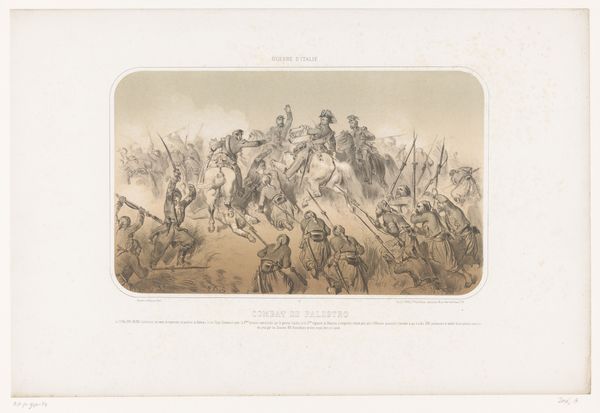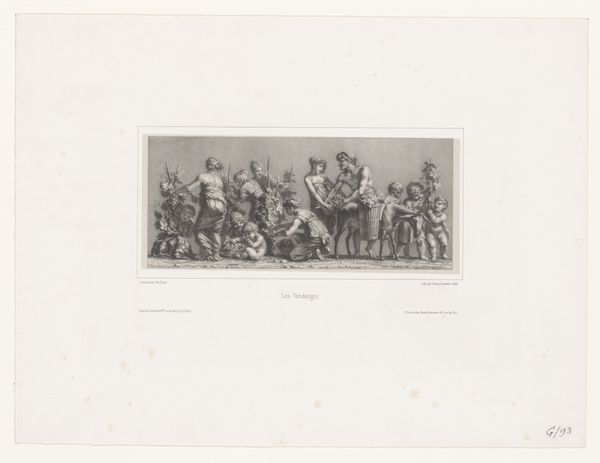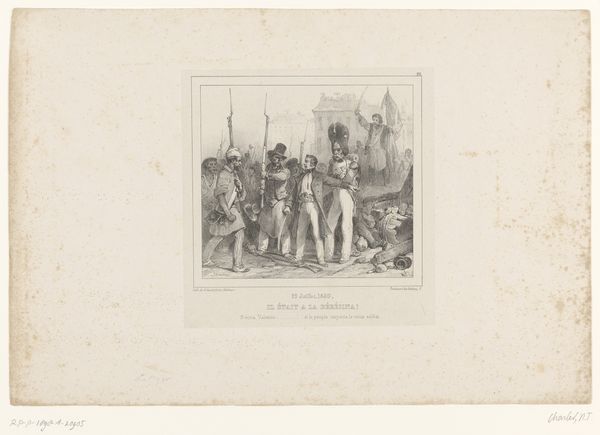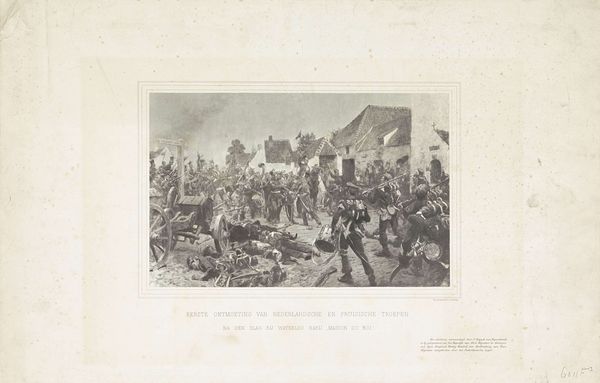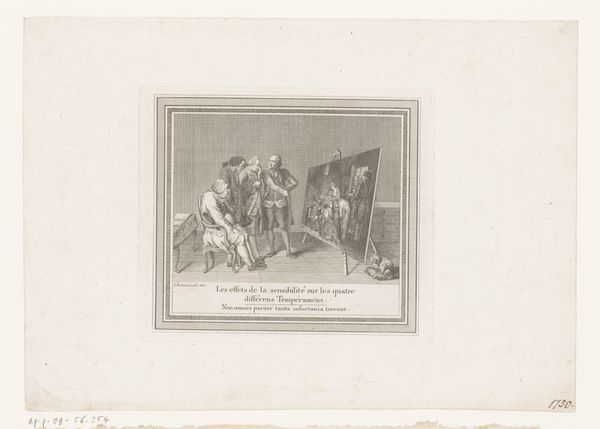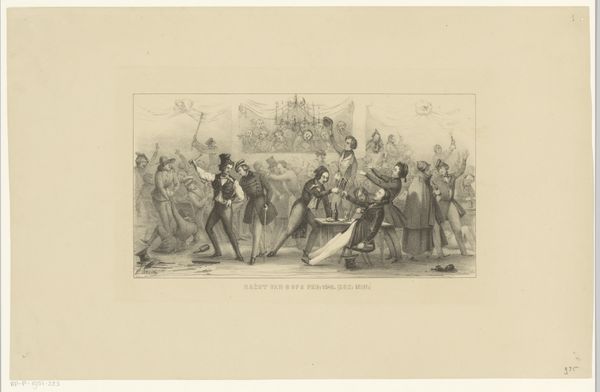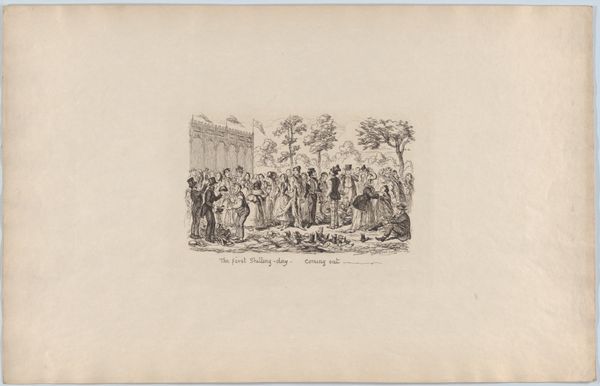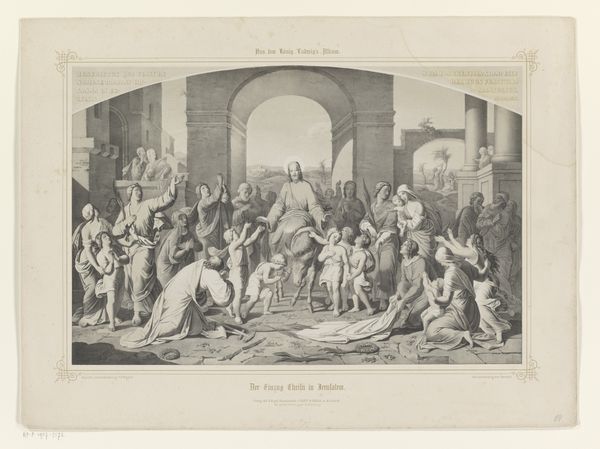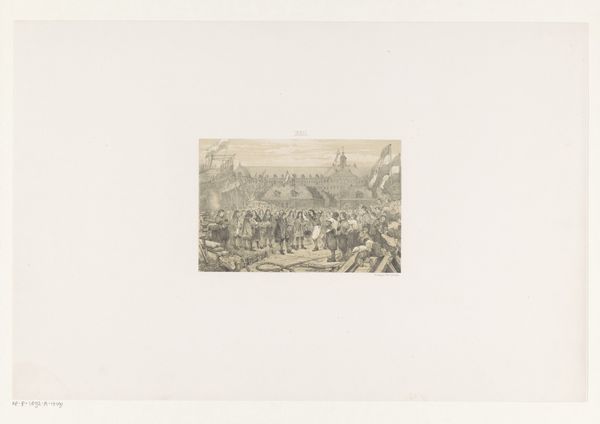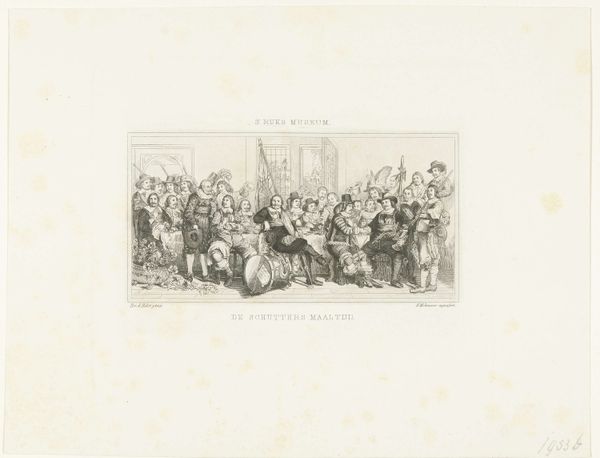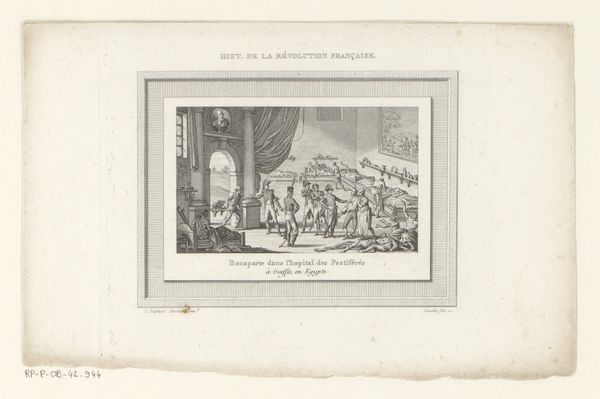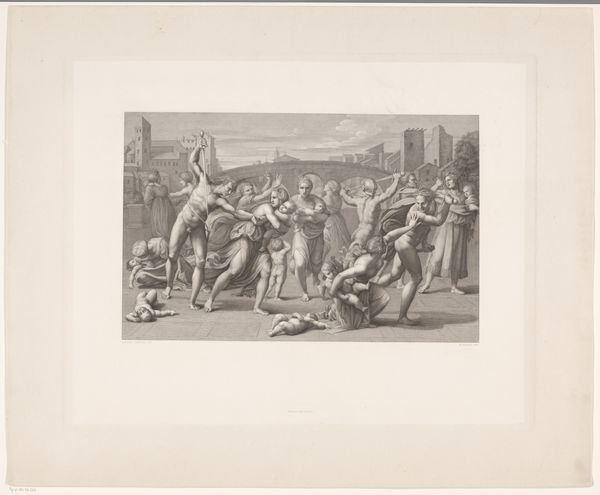
Dimensions: height 445 mm, width 595 mm
Copyright: Rijks Museum: Open Domain
Curator: Here we have an engraving from the 1850s, titled “Dood van Luitpold in de strijd,” or "Death of Luitpold in Battle" by Carl Federle. Editor: Immediately striking. The dramatic lighting, the chaos of figures and horses... it evokes a strong sense of turmoil and classical tragedy. Curator: Federle depicts the death of Duke Luitpold of Bavaria. The composition speaks to the mid-19th century obsession with medieval history and the re-establishment of historical figures as crucial elements of national identity. Editor: Notice the central figure, almost a Christ-like representation. He is idealized, presented as both powerful and vulnerable in his final moments. He is carrying the flag of what appears to be modern Bavaria, if the lozenges are to believed, however the rest of the visual language references much earlier artistic conventions. Curator: It's a potent mixture. You see how the artist links Luitpold's death to Bavarian heroism. Federle likely aimed to stir patriotic fervor in a time of emerging nationalism and consolidation of German-speaking nations. Think about the context--this engraving circulated, was mass produced, likely hung in public buildings and private homes. Editor: It reminds us how death scenes have been used throughout history to solidify identity and cultural memory. The iconography taps into pre-existing archetypes of sacrifice and martyrdom for the fatherland, and echoes those of ancient heroes who chose glorious death over compromise or defeat. The wailing figure on the right is another marker for tragedy, reminding viewers to lament this noble figure, whose death helped to define Bavaria. Curator: Exactly, and engravings were powerful tools for disseminating these ideas. This wasn't just art; it was a visual argument about Bavarian identity. The visual grammar is quite straightforward, in a manner that would communicate immediately to its audience. Editor: Yes, from a symbolic point of view it encapsulates themes of both valor and grief, reflecting Bavaria's struggles and triumphs. A careful weaving of political and social ideals through easily understood imagery, thus securing this image and the narrative in cultural memory. Curator: Federle gives us a glimpse into the politicized visual culture of 19th-century Bavaria and the deployment of national narratives. Editor: Indeed, a blend of romantic idealization and political maneuvering, rendered with clarity.
Comments
No comments
Be the first to comment and join the conversation on the ultimate creative platform.
